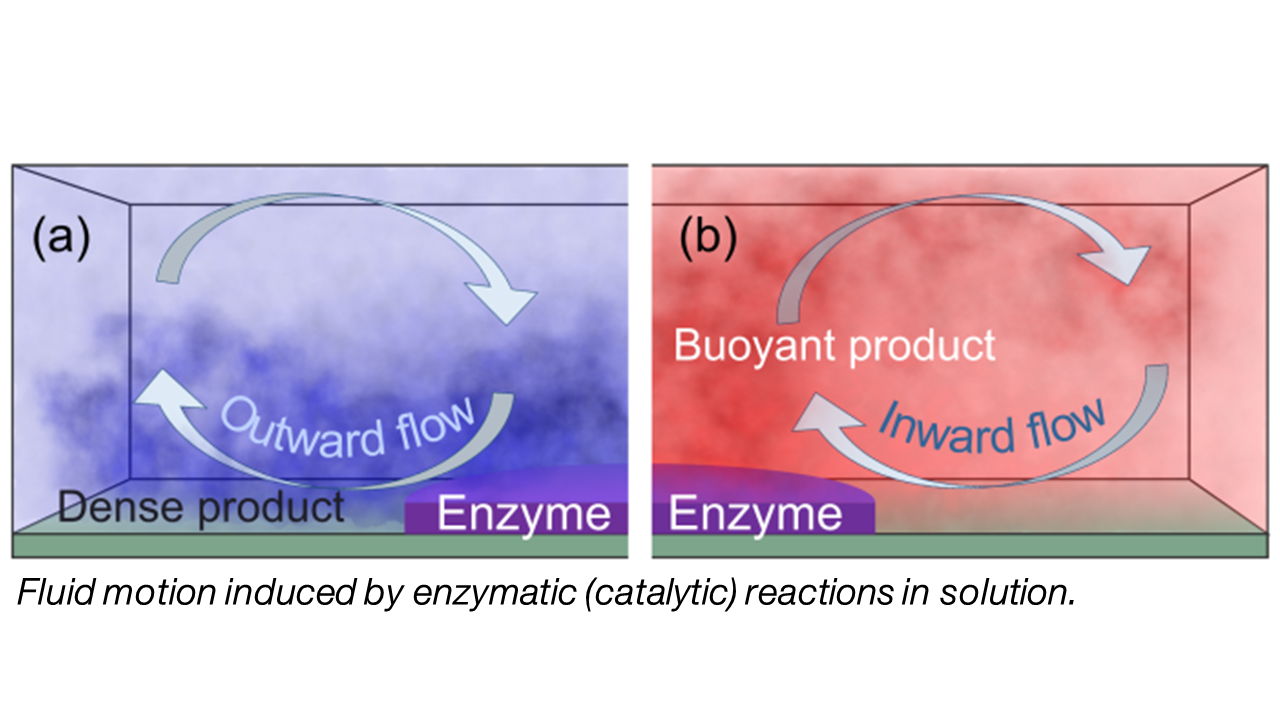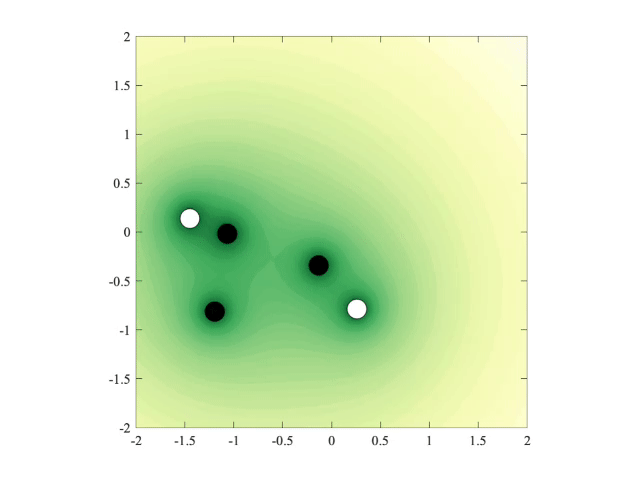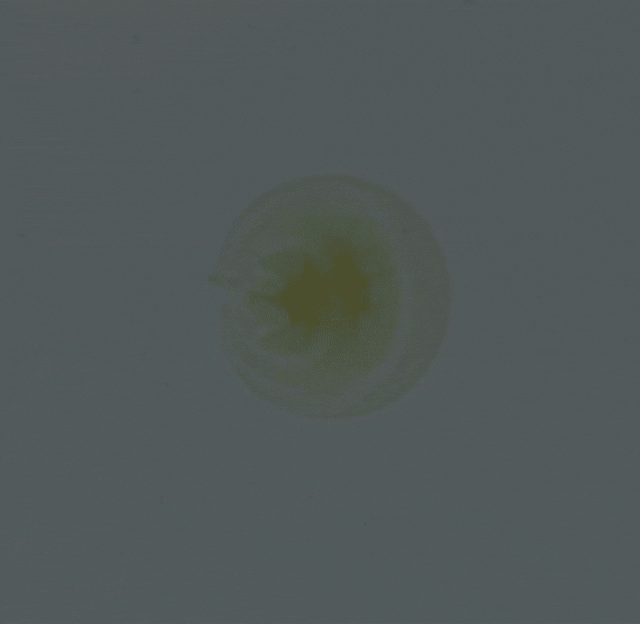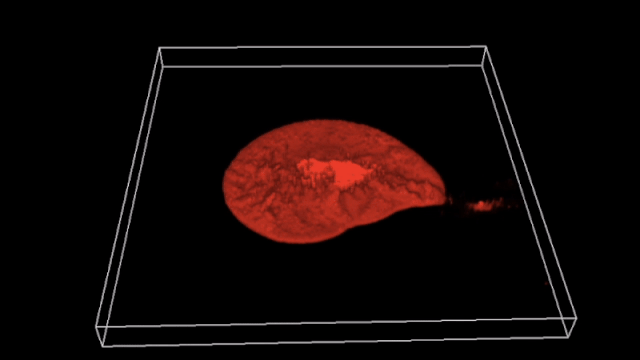Research
Our vision for the Center for Chemo-Mechanical Assembly (CCMA) is to design a palette of chemical reaction networks to achieve unprecedented control over fluid flow and thereby drive the dynamic assembly of nano- and microscale objects in solution. In this manner, we aim to discover new chemical routes to regulate non-equilibrium structure formation. To realize this vision, we are designing cascades of catalytic reactions, controllable in space and time, and harnessing the energy released from these reactions to both propel the fluid and “pattern” the spatio-temporal behavior of the flows. These chemically-generated and chemically-patterned flows drive the collective behavior of suspended objects, thereby yielding new modes of self-organization.

While mechanical and electrical pumps are currently used in microfluidics to drive flow and control the trajectories of suspended materials, our designs let chemistry do the work by generating programmable flow fields that enable chemically driven forms of self-powered assembly. In essence, we are moving “pumping” from the mechanical (electrical) realm to the chemical realm and thus, enabling new, chemically-driven forms of self-powered particle transport and assembly



The migration of a polystyrene particle assembly due to flows from suspended gold nanoparticles under UV irradiation (Speed 300x). After assembly, the beam of light is moved to a new location and the ensemble moves to follow it. (Benjamin M. Tansi, Matthew L. Peris, Oleg E. Shklaev, Anna C. Balazs, and Ayusman Sen. Angew. Chem., Int. Ed. 58, 2295 (2019))
The assembly of 10 µm polystyrene particles during UV irradiation in a TiO2 nanoparticle suspension (speed 300x). The flows near the surface carry the particles towards the region being irradiated and press them into a close-packed colloidal crystal monolayer. (Benjamin M. Tansi, Matthew L. Peris, Oleg E. Shklaev, Anna C. Balazs, and Ayusman Sen. Angew. Chem., Int. Ed. 58, 2295 (2019))
Supracolloidal fiber, made from self-adhering zwitterion-stabilized emulsion droplets, swimming at an air-water interface (submitted manuscript, Emrick and Stone groups).
Two-part segmented supracolloidal fiber, with droplets containing dense oil (pink) standing in the aqueous phase and droplets containing light oil (white) rotating at the air-water interface (submitted manuscript, Emrick and Stone groups).
Three-part segmented supracolloidal fiber, with droplets containing light oil (white) oscillating at the air-water interface and droplets containing heavy oil (pink) pinning the fiber into the aqueous phase (submitted manuscript, Emrick and Stone groups).